Difference: 1. Fetch cannot natively monitor the progress of the request, while ajax is developed based on native XHR and can be monitored; 2. Compared with ajax, fetch has a better and more convenient writing method; 3. fetch only An error is reported for network requests, and 400 and 500 are regarded as successful requests, but ajax will not.

The operating environment of this tutorial: windows7 system, jquery1.10.2 version, Dell G3 computer.
The difference between ajax and fetch:
(1) Ajax uses the XMLHttpRequest object to request data, while fetch is a window Method
(2). Ajax is developed based on native XHR. The structure of XHR itself is not clear. There is already an alternative to fetch
(3). Compared with ajax, fetch is better and more efficient. Convenient way of writing
(4), fetch only reports errors for network requests, and treats 400 and 500 as successful requests, which need to be encapsulated for processing
(5), fetch cannot natively monitor requests progress, and XHR can Maybe many people don't know how to write an ajax request themselves. They all use JQuery or Axios to request data
var xhr= new XMLHttpRequest(); // 新建XMLHttpRequest对象
xhr.onload= function(){ //请求完成
console.log(this.responseText);
}
// 发送请求:
xhr.open('GET', '/user');
xhr.send(); Such a request is sent out. It's very troublesome. You have to write so many lines of code to send a simple request. Of course you won't write it like this in actual development, otherwise the code will be redundant and readable. Use promise to encapsulate it var Ajax = {
get: function(url,fn){
// XMLHttpRequest对象用于在后台与服务器交换数据
var xhr=new XMLHttpRequest();
xhr.open('GET',url,false);
xhr.onreadystatechange=function(){
// readyState == 4说明请求已完成
if(xhr.readyState==4){
if(xhr.status==200 || xhr.status==304){
console.log(xhr.responseText);
fn.call(xhr.responseText);
}
}
}
xhr.send();
},
// data应为'a=a1&b=b1'这种字符串格式,在jq里如果data为对象会自动将对象转成这种字符串格式
post: function(url,data,fn){
var xhr=new XMLHttpRequest();
xhr.open('POST',url,false);
// 添加http头,发送信息至服务器时内容编码类型
xhr.setRequestHeader('Content-Type','application/x-www-form-urlencoded');
xhr.onreadystatechange=function(){
if (xhr.readyState==4){
if (xhr.status==200 || xhr.status==304){
// console.log(xhr.responseText);
fn.call(xhr.responseText);
}
}
}
xhr.send(data);
}
} Code comments: 1,
open (method, url, async)The method requires three parameters:
method: The method used to send the request (GET or POST); compared with POST, GET is simpler It is also faster and works in most cases; however, please use POST requests in the following situations:
②Send a large amount of data to the server (POST has no data limit)
- url: Specifies the URL of a server-side script (the file can be any type of file, such as .txt and .xml, or a server script file, such as .asp and .php (which can perform tasks on the server before sending back a response )); async: Specifies that the request should be processed asynchronously (true) or synchronously (false); true means executing other scripts while waiting for the server to respond, and responding to the request when the response is ready Process; false means waiting for the server response before executing.
- 2. The send() method can send the request to the server. 3. onreadystatechange: There is a function that processes the server response. Whenever readyState changes, the onreadystatechange function will be executed.
- 4. readyState: stores the status information of the server response.
- 2: The request has been received (the send method has been called, and the header and status are available)
- 3: The request is being processed (downloading, the responseText attribute already contains part of the data)
- 4: The request has been completed and the response is ready (the download operation has been completed)
- 5.responseText: Obtain response data in string form.
- 6.setRequestHeader(): When POST transmits data, it is used to add HTTP header, then send(data), pay attention to the data format; when GET sends information, directly add parameters to the url. Yes, for example url?a=a1&b=b1.
- fetch usage
- 1. The first parameter is the URL 2. The second parameter can Selecting parameters can control different init objects
var arr1 = [{
name: "haha",
detail:"123"
}];
fetch("url", {
method: "post",
headers: {//设置请求的头部信息
"Content-Type": "application/json"
//跨域时可能要加上
//"Accept":"allication/json"
}, //将arr1对象序列化成json字符串
body: JSON.stringify(arr1)//向服务端传入json数据
}).then(function(resp) {
resp.json().then((data) => {
})
});All IE browsers will not support the fetch() method, and the server will return status code 400 500 Will not reject【Related tutorial recommendation: AJAX video tutorial】The above is the detailed content of What is the difference between ajax and fetch. For more information, please follow other related articles on the PHP Chinese website!
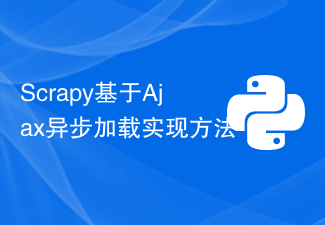 Scrapy基于Ajax异步加载实现方法Jun 22, 2023 pm 11:09 PM
Scrapy基于Ajax异步加载实现方法Jun 22, 2023 pm 11:09 PMScrapy是一个开源的Python爬虫框架,它可以快速高效地从网站上获取数据。然而,很多网站采用了Ajax异步加载技术,使得Scrapy无法直接获取数据。本文将介绍基于Ajax异步加载的Scrapy实现方法。一、Ajax异步加载原理Ajax异步加载:在传统的页面加载方式中,浏览器发送请求到服务器后,必须等待服务器返回响应并将页面全部加载完毕才能进行下一步操
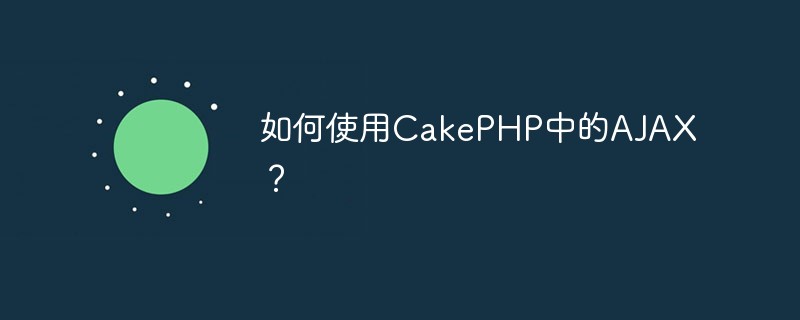 如何使用CakePHP中的AJAX?Jun 04, 2023 pm 08:01 PM
如何使用CakePHP中的AJAX?Jun 04, 2023 pm 08:01 PM作为一种基于MVC模式的PHP框架,CakePHP已成为许多Web开发人员的首选。它的结构简单,易于扩展,而其中的AJAX技术更是让开发变得更加高效。在本文中,将介绍如何使用CakePHP中的AJAX。什么是AJAX?在介绍如何在CakePHP中使用AJAX之前,我们先来了解一下什么是AJAX。AJAX是“异步JavaScript和XML”的缩写,是指一种在
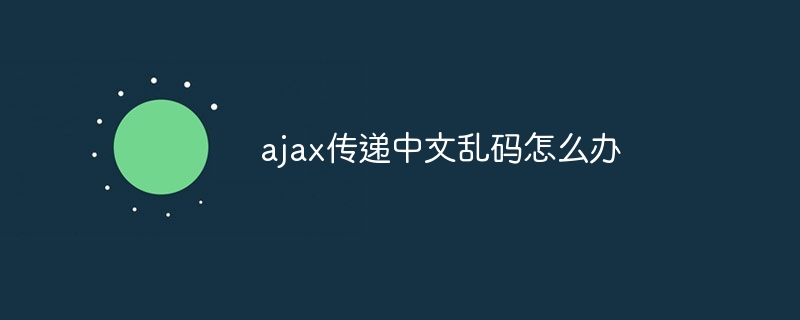 ajax传递中文乱码怎么办Nov 15, 2023 am 10:42 AM
ajax传递中文乱码怎么办Nov 15, 2023 am 10:42 AMajax传递中文乱码的解决办法:1、设置统一的编码方式;2、服务器端编码;3、客户端解码;4、设置HTTP响应头;5、使用JSON格式。详细介绍:1、设置统一的编码方式,确保服务器端和客户端使用相同的编码方式,通常情况下,UTF-8是一种常用的编码方式,因为它可以支持多种语言和字符集;2、服务器端编码,在服务器端,确保将中文数据以正确的编码方式进行编码,再传递给客户端等等。
 Nginx中404页面怎么配置及AJAX请求返回404页面May 26, 2023 pm 09:47 PM
Nginx中404页面怎么配置及AJAX请求返回404页面May 26, 2023 pm 09:47 PM404页面基础配置404错误是www网站访问容易出现的错误。最常见的出错提示:404notfound。404错误页的设置对网站seo有很大的影响,而设置不当,比如直接转跳主页等,会被搜索引擎降权拔毛。404页面的目的应该是告诉用户:你所请求的页面是不存在的,同时引导用户浏览网站其他页面而不是关掉窗口离去。搜索引擎通过http状态码来识别网页的状态。当搜索引擎获得了一个错误链接时,网站应该返回404状态码,告诉搜索引擎放弃对该链接的索引。而如果返回200或302状态码,搜索引擎就会为该链接建立索引
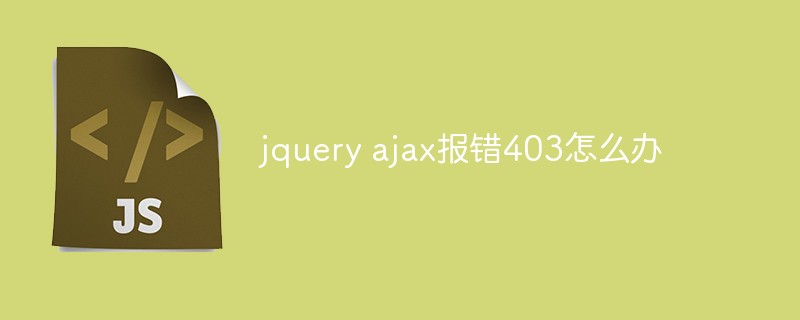 jquery ajax报错403怎么办Nov 30, 2022 am 10:09 AM
jquery ajax报错403怎么办Nov 30, 2022 am 10:09 AMjquery ajax报错403是因为前端和服务器的域名不同而触发了防盗链机制,其解决办法:1、打开相应的代码文件;2、通过“public CorsFilter corsFilter() {...}”方法设置允许的域即可。
 什么是ajax重构Jul 01, 2022 pm 05:12 PM
什么是ajax重构Jul 01, 2022 pm 05:12 PMajax重构指的是在不改变软件现有功能的基础上,通过调整程序代码改善软件的质量、性能,使其程序的设计模式和架构更合理,提高软件的扩展性和维护性;Ajax的实现主要依赖于XMLHttpRequest对象,由于该对象的实例在处理事件完成后就会被销毁,所以在需要调用它的时候就要重新构建。
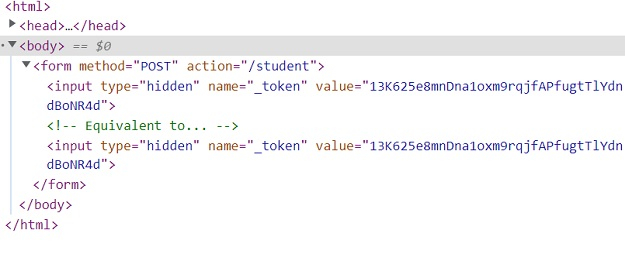 在Laravel中如何通过Ajax请求传递CSRF令牌?Sep 10, 2023 pm 03:09 PM
在Laravel中如何通过Ajax请求传递CSRF令牌?Sep 10, 2023 pm 03:09 PMCSRF代表跨站请求伪造。CSRF是未经授权的用户冒充授权执行的恶意活动。Laravel通过为每个活动用户会话生成csrf令牌来保护此类恶意活动。令牌存储在用户的会话中。如果会话发生变化,它总是会重新生成,因此每个会话都会验证令牌,以确保授权用户正在执行任何任务。以下是访问csrf_token的示例。生成csrf令牌您可以通过两种方式获取令牌。通过使用$request→session()→token()直接使用csrf_token()方法示例<?phpnamespaceApp\Http\C
 使用HTML5文件上传与AJAX和jQuerySep 13, 2023 am 10:09 AM
使用HTML5文件上传与AJAX和jQuerySep 13, 2023 am 10:09 AM当提交表单时,捕获提交过程并尝试运行以下代码片段来上传文件-//File1varmyFile=document.getElementById('fileBox').files[0];varreader=newFileReader();reader.readAsText(file,'UTF-8');reader.onload=myFunc;functionmyFunc(event){ varres


Hot AI Tools

Undresser.AI Undress
AI-powered app for creating realistic nude photos

AI Clothes Remover
Online AI tool for removing clothes from photos.

Undress AI Tool
Undress images for free

Clothoff.io
AI clothes remover

AI Hentai Generator
Generate AI Hentai for free.

Hot Article

Hot Tools

Dreamweaver Mac version
Visual web development tools

MantisBT
Mantis is an easy-to-deploy web-based defect tracking tool designed to aid in product defect tracking. It requires PHP, MySQL and a web server. Check out our demo and hosting services.

Notepad++7.3.1
Easy-to-use and free code editor

SAP NetWeaver Server Adapter for Eclipse
Integrate Eclipse with SAP NetWeaver application server.

SublimeText3 Mac version
God-level code editing software (SublimeText3)






